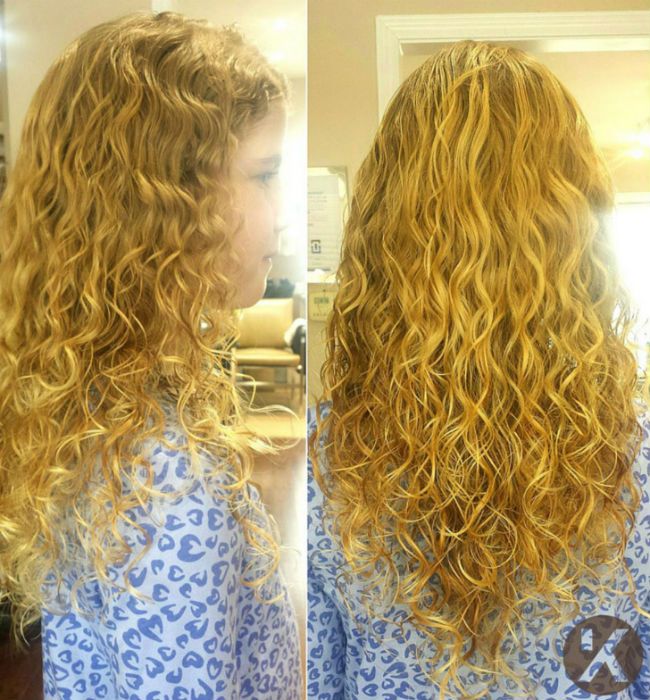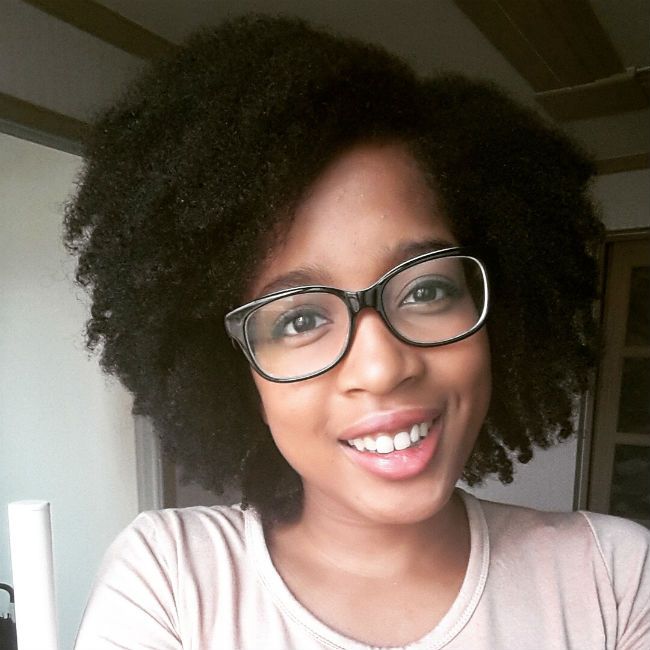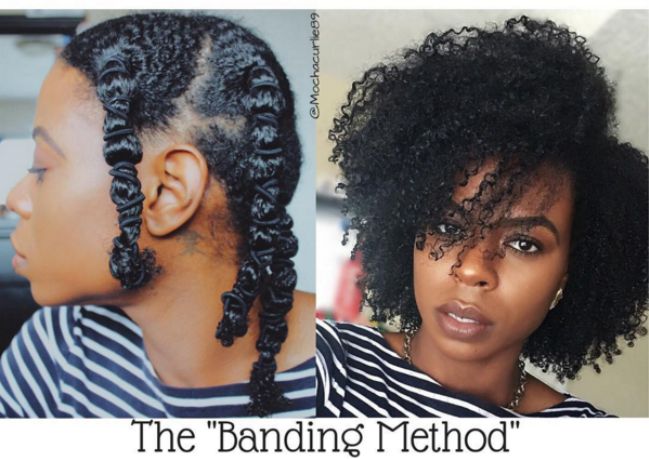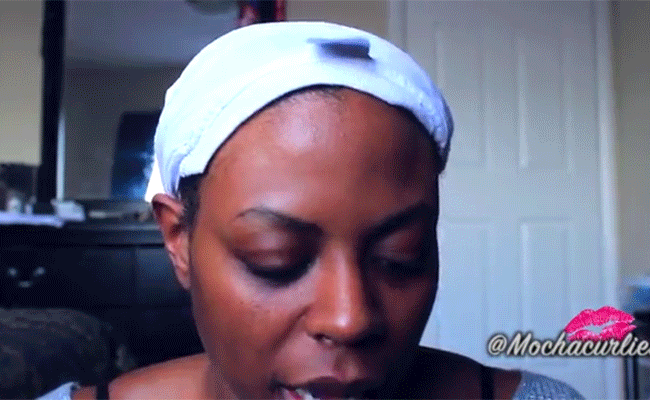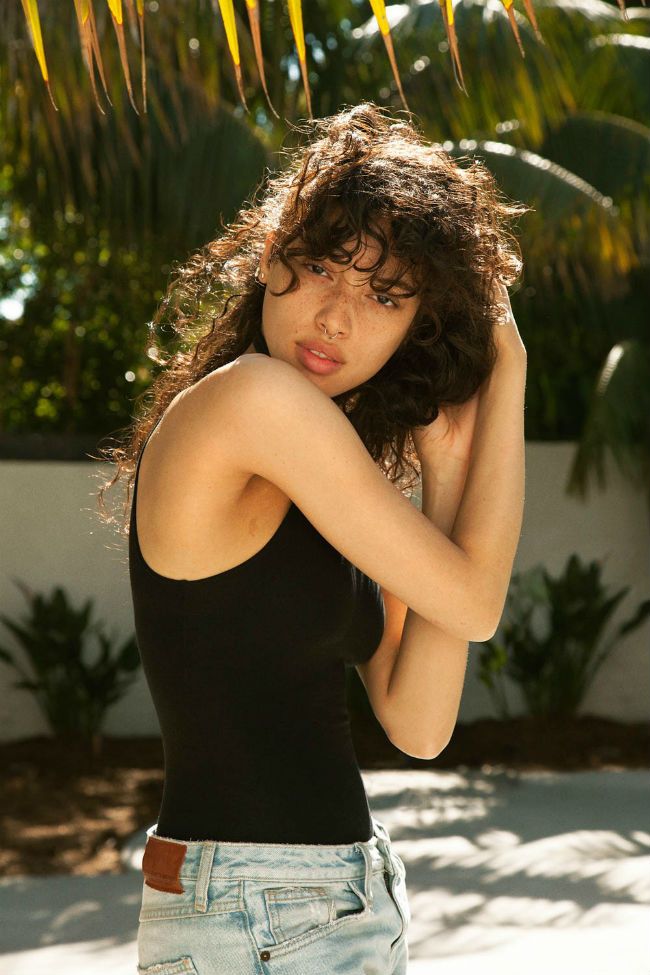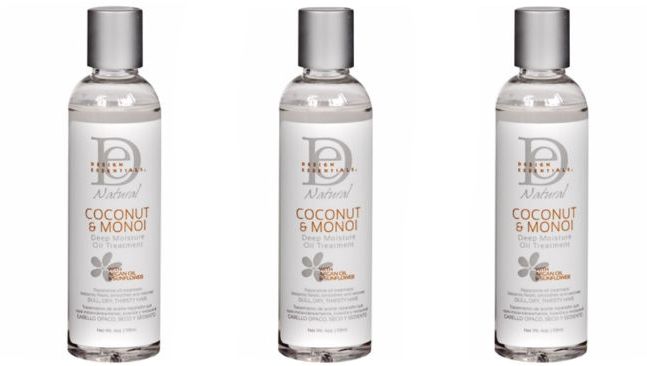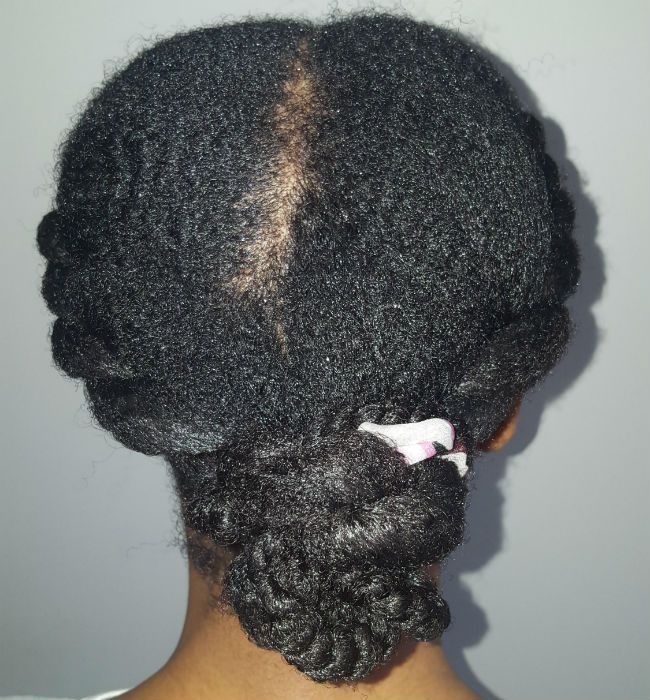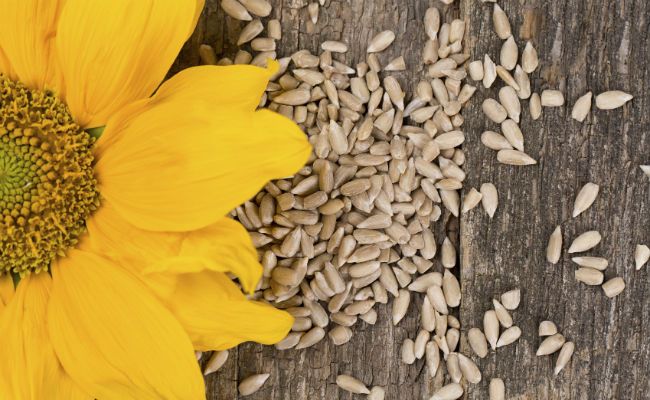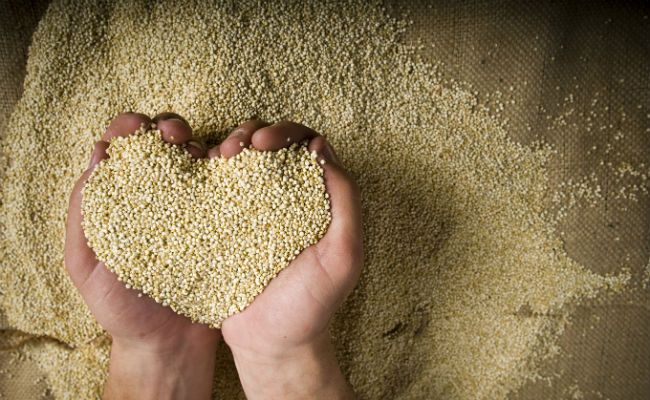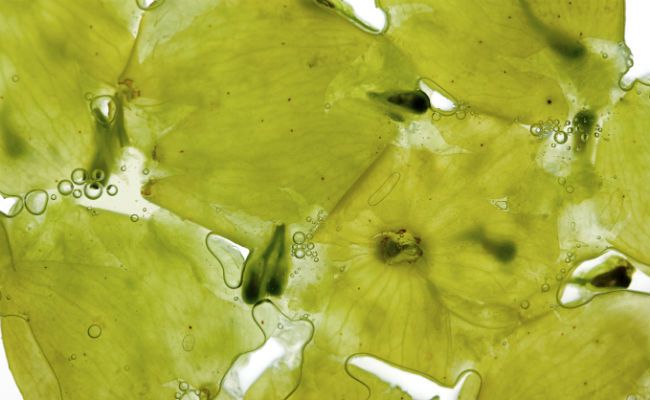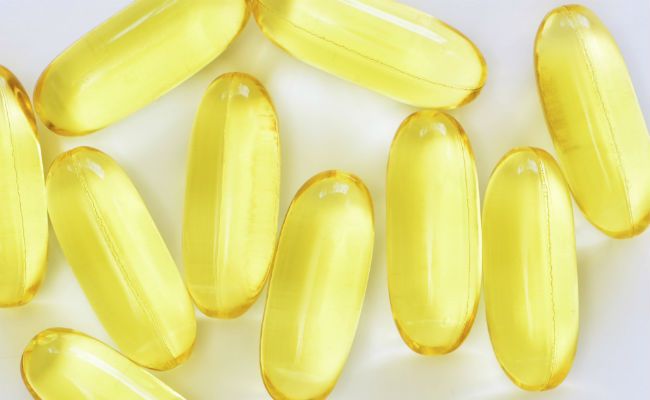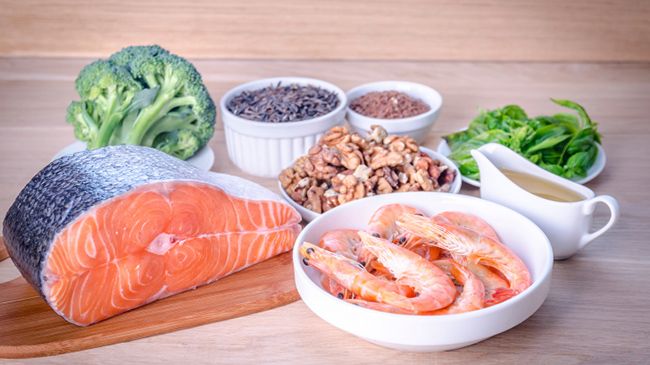Search Results: Vanessa Osbourne

Here are a few tips to help you find the right barber for you.
The relationship between a woman and her stylist or barber is an important one.
She is entrusting a major part of her physical appearance to this individual which, of course, is a lot of responsibility. When I had relaxed hair, I used the same stylist from my mid teen years until my late twenties. I had confidence in her, knowing I would not have to worry about how everything was going to turn out. Getting your hair done should never be an anxiety-inducing event. It should be just like a spa day, leaving you feeling refreshed and brand new. Here are a few tips to help you find the right barber for you.
1. Ask a stranger for advice.
If you see someone with a cut you like, then make sure to ask where they got it. It’s like asking for directions, its better to ask than end up getting lost, wandering around for hours and wasting precious time.
2. Search Google & Instagram.
Being good with Google is an important 21st century skill. Conduct searches to see what people are saying about barbers, barbershops and/or salons in your area.
Instagram searches will provide you with both pictorial and written reviews. #Dopestcutever. Direct message users questions about their cuts and maintenance–it would be a lot less creepy than some of the things people send in direct messages.
3. Know exactly what you want.
Can’t describe to the barber exactly what you want? You are increasing your chances of being disappointed by the end result. Never expect people to read your mind. Know what you want and bring your own pic references or look through their catalogue but never wing it. Have a clear vision and communicate that vision clearly.
4. Visit the shop and observe before making an appointment.
Look for licenses on the wall, check out the cleanliness of the shop including the restrooms. Observe your potential barber at work. Look for clues as to his skill level and professionalism. Ask yourself:
- Does the barber clean his hands and tools between clients?
- Is he focused on the job at hand or does he take frequent breaks and multiple phone calls?
While it is expected that interruptions occur, it is important that your barber maintains focus and provides clients with a good customer experience. Taking multiple phone calls or cigarette breaks do not go hand in hand with good customer service. Spend some time browsing any catalogs that might be present or have a look at the photos of clients on display, if there are any. Consider this entire exercise to be an interview for employment.
5. Schedule a consultation
Barbering is an art and skill. It’s a creative process. Have a consultation with a barber before actually diving in for a cut to see if you feel comfortable and confident in your barber’s skills and vision for your cut. If your prospective barber is comfortable and relaxed with you, you are likely to get a much better result.
What are your tips for choosing the right barber?
Please share your experiences below in the comment section.
The place to be for curly hair essentials and options in the product and services arena would be Toronto.Toronto is the most populous city in Canada and the fourth most populous North American city and with that comes every amenity you could possible need. Here are 5 curly, natural and loc’d hair salons to check out in Toronto.
Curl Bar Beauty Salon
Curl Bar Beauty Salon is a Deva inspired hair salon, with stylists trained at the Devachan academy in New York. These guys have a 7-day guarantee and if you aren’t satisfied they will adjust it as long as you return within 7 days to have the adjustment done. All of Curl Bar’s services include hydration and styling and they send you home with the know how to take care of and maintain your hair.
The Curl Ambassadors
The Curl Ambassadors Salon opened in 2006 and caters to all curls all typed or curls, coils and waves. This salon also has Devachan trained stylists to give your curls the perfect shape. They will walk you through the products, tools and techniques to help you get the best results for your hair day in and day out.
Nanni’s Natural Hair Studio
Nanni’s is the place to go if you have locs or are interested in transitioning with loc extensions. Looking for a loc wig? Yep, Nanni’s got you covered. If you need loc repair and maintenance, Nanni’s got you covered as well.
The Jonathan Torch Curly Hair Institute
The Curly Hair Institute doesn’t just offer styling services, this salon offers scalp treatments as well. What’s more, 2-3 PM is happy hour and hair services are discounted by 25%, Monday to Thursday (as long as you pay with cash”>. This salon offers everything from chemical treatments to formal updos. Jonathan Torch is the creator of beloved curly hair product, Curl Keeper.
Kinks Hair Studio and Spa
Kinks Hair Studio and Spa is quite literally a one stop shop for head to toe beauty. Get all your hair needs met and treat yourself to a spa day while you’re at it. Kink’s owner has also developed a brand of vegan products formulated with the highest quality ingredients. The Kinks philosophy is that healthy hair comes first and they strive to ensure that all clients are satisfied and their environment is warm, welcoming and relaxing.
If you’ve been to one of these salons let us know how you enjoyed your experience or share your recommendations for curly hair salons to visit in Toronto.
Read more: Top Curly Hair Salons in the UK | Top Natural Hair Salons in Houston | 4 Certified Curly Hair Salons in Florida
What area would you like to see us spotlight next? Tell us in the comments.
Don’t forget to leave a review for your recent salon experience.
Growing up in Jamaica, we used to say that there’s a Jamaica in every country you can think. If you’re from a large country like the US with hundreds of millions of people, it might not seem like a big deal. But Jamaica is a small, tropical island with a small population (less that 3 million people”>. Therefore, a Jamaican in Alaska for example is, to say the least, very interesting. Learning that Adriana was a type 4 naturalista living in Korea was like hearing of a Jamaican in Alaska; I was intrigued and I couldn’t wait to learn a little more about her. I reached out and found her to be as warm and inviting as a tropical breeze.
How my journey started
I was a sophomore in college and pretty much all my life I had been holding on to severely damaged and broken hair. Around this time, going natural was becoming pretty popular so I just decided to go for it. With encouragement from my best friends, I got the scissors and went to town.
My transition actually wasn’t on purpose. This sounds pretty bad, but I was too busy and clueless to deal with my hair. I just so happened not to have had a relaxer for almost a year and I could see curls growing at the roots and I was curious to see more of them and that’s when I cut it.
Coming to Korea–with natural hair
I first applied to come teach in Korea during my last semester of undergrad.
But my first time applying I ran into some bumps. I applied again that fall and passed all the steps to become an English teacher at a Korean public school. I always wanted to see more of the world and it was amazing that I was finally given the opportunity to strike out at it on my own.
I won’t lie–being natural in Korea is a definite challenge.
When I first arrived, I was in a good place in regards to my hair. It was finally starting to retain moisture and I had gotten much better at twist-outs. But I think the new environment was a shock to it. My edges seemed much thinner and my hair was constantly hard and dry—more so than usual.
The technical, social, and cultural issues
If you aren’t in Seoul, most of the Korean people you meet have probably never seen a black person in real life before.
When I first arrived I always wore my hair in a very stretched, almost straight, style. Admittedly, I was worried about the reactions. However, I got tired of trying to keep up the façade every day and began to wear my barely stretched curls and puffs. My co-workers and students were amazed and curious. Most of the younger teachers seemed to show restraint, but my older vice-principal had no shame touching and pulling my hair.
More than a few times, I’d arrive to the office in the mornings and she would come up to examine my hair, a look of wonder and amusement on her face. I never gave permission, but I never told her to stop either. I just stood there feeling completely uncomfortable as she played with my hair. My students were worse. I expressly told them no, I did not want them to touch my hair, but that resulted in sneak attacks.
When my back was turned I would feel hands grazing my hair.
If I bent down near a student’s desk fingers would stretch out. Even in the cafeteria as I sat and ate my lunch I would get “grab-bys,” giggling girls grabbing a good handful then running away. Since I moved to Seoul it’s been much better, but I still get looks and have my hair talked about on the subway or in my classroom.
My current regimen
I have difficulty finding something that really works well for me. My hair is both very fine and low density—a combination that is rarely featured on vlogs or Instagram posts.
And I have always been pretty clueless when it comes to hair and beauty, so for girls with hair like mine, it can be difficult to find a perfect style or an icon to follow. I am inspired by any girl who is doing her thing and rocking her fro, twists, braids, locs, or curls.
I try to keep my hair stretched lately because it mats and tangles less that way. My hair tangles terribly, but I’m not good with protective styling. That leads to me reaching for the scissors often. I typically pull my hair back into a puff and go. When I’m not feeling lazy, I’ll partially blow-out my hair leaving lots of volume and do a messy twist-out. I like my hair big, undefined, and a little wild. I don’t have any set regimen. I usually wash once a week, wear twists, twist out, and then pull it back until next wash day.
Some products I like to use are raw shea butter, Cantu Shea Butter Leave-In conditioner, and Shea Moisture’s Jamaican Black Castor Oil Hair Masque.
[prodmod]
My hair has been difficult to manage in South Korea.
Sometimes I just want to cut it off and just wear wigs. But I know I would miss it after a week. And although it can be burdensome at times, I do love talking about black women and their hair, it was even the subject of my senior thesis. If someone is genuinely interested in learning more I don’t hesitate to help them along. I’ve had long discussions about it with Korean friends, my co-workers, and other foreigners to Korea.
It’s a little weird too, being, in a way a representative for black women and being asked to speak on our hair. But I try my best to leave the person a little more educated. For the most part, the experiences have all been positive. The general reaction is just genuine interest and surprise for all of the different styles we can have on a day-to-day basis.
Learn more about Adriana by following her on Instagram and reading her adventures in hair care on her blog.
As a woman of color, I have to be mindful of the way I navigate corporate America in order to be viewed as professional. There are unwritten rules.
Recently, writer Michelle Gadsen-Williams came forward about the struggle she faced while wearing natural hair as an executive of a Fortune 500 company. Michelle’s story is similar to the story of many naturals. For years and years she would flat iron her hair as a part of her high powered executive uniform. Then things changed. A medical scare which lead to surgery followed by soreness caused Michelle to be unable to flat iron her hair as she normally would. So began her return to natural; Williams allowed her curls their time in the sun.
I’ll admit now that I was afraid: first, of the conversations it would spark with my peers and superiors
I’ll admit now that I was afraid: first, of the conversations it would spark with my peers and superiors, both Black and white, and second, of the deeply ingrained racial issues regarding what constitutes “polished”—I just wasn’t prepared to address them at the time.
As many of us naturals can relate to some of the doubts that Michelle experienced when she went back to work with her new look, I find her story especially insightful.
When I went natural some six years ago, coworkers constantly asked me if I was going to start wearing dreadlocks. Sometimes they’d tell me repeatedly about their preference of my relaxed hair. I was always concerned about my hair growing frizzy throughout the day and not looking as polished as possible.
I am not an executive–I am a paint chemist and I work in manufacturing facilities were production workers are allowed to wear jeans. However, I was expected to dress like a member of the administrative staff. With the ever present risk of paint spilling and splashing all over me, I would’ve loved wearing jeans with my steel-toed boots–but of course, that would have been frowned upon. I was expected to look professional regardless of the messy nature of my job. Adding natural hair to the mix made me feel especially self-conscious.
No one is going to come out and tell you that your hairstyle is a problem. You will likely figure it out over time, when you’re continuously passed over for a job, a promotion, or a particular assignment. If you have aspirations to reach the next level of leadership, you have to play ball—something I did for years.
Some naturals work in environments that reward hard work and dedication while paying no attention at all to how your hair is styled; I’m not certain if these naturals are in the majority.
Natural hair tends to attract attention. That’s just how it is. Sadly, often time our own friends and family are the ones that try to undermine our decision to embrace our natural self and while I’m unwilling to speculate about the reasons behind the reluctance to let us just be as we are, there is a lot of truth behind the idea that the longer you are natural the less you care about what others think about your hair. I don’t think you ever stop caring though, because we are social beings that want other people to like us. Natural hair is a lot more acceptable now than in the past but there are people who still believe that it has no place in the world of work.
And then a Black female colleague stated, ‘In my opinion, some hairstyles are just not appropriate for the workplace.’ I was deflated.
As many of us have our own versions of Michelle’s story, it is great to remember that we are not alone.
That’s what has always been great about the natural hair community–the camaraderie and support that exists has bolstered many of us to persevere when things get tough. We are here where we are free to be whomever we choose to be.
We’d love to hear about your experiences.
Hair is a cornerstone of self-esteem and identity for many people, but ironically, some hairstyles meant to improve our self-confidence actually lead to hair and scalp damage.”
Researchers from Johns Hopkins published recent findings from a review of 19 studies that confirmed a strong association between how Black women style their hair and its relation to hair loss.
Traction alopecia is a type of hair loss that occurs when stress is placed on the scalp and hair follicle over time; this condition may be temporary or permanent and is common along the hairline.
In the report, Hopkins researchers urged dermatologists to become more aware of styles such as ponytails braids and weaves, common hairstyles worn by Black women. These hairstyles are usually done in a manner which creates tension. Traction alopecia is believed to be the most common form of hair loss among black women, with an estimated thirty-three percent of black women suffering from this condition, according to Journal of the American Academy of Dermatology.
Popular hairstyles were placed in 3 categories by the research team: low, moderate, and high risk.
It is important to note that there was no zero risk category, and categorization was according to the amount of:
- heat applied
- the weight placed on the hair, and
- the use of chemicals to alter the hair.
High risk styles include:
- dreadlocks
- weaves
- extensions, and
- braids
Another factor in high risk hairstyles was if the hair had been chemically altered. The findings suggest that Black natural hair has a better ability to withstand the stress that results from a high risk style. Heat and chemicals are known to break down the protein structure of the hair, making it weaker than unaltered strands. This made it easy to realize how styles are create on both a healthy strand and a chemically altered strand leads to different outcomes or risk factors.
Moderate risk hairstyles include:
- those done on hair that has been straightened temporarily through the use of heat.
Heat can weaken the hair shaft, the research claims, so alopecia may result because of the additional stress at this time. High risk styles may be downgraded to moderate risk when done on unaltered or natural hair. Low risk styles include those that hang freely without tension what naturals would tend to call “out” styles. Loose buns and updos are styles that are unlikely to result in alopecia and the researchers noted that curly hair dos such as moisturizing the hair frequently and using products that contain conditioning agents also reduce the risk of traction alopecia.
Yasmine Young, a Baltimore salon owner, also believes that women should return to natural in order to prevent pattern baldness. She sees the findings of the study as bringing out what she already noticed in practicing her craft on clients. “It’s usually from weaves or braids pulled too tight and someone has a bald spot. Then, they keep going back to the same style,” says Young.
Unfortunately, most of us are not surprised by the results of this recent study.
The Black hair community, including stylists and weaveologists, have had a penchant for what we call neatness. All my life, I’ve seen styles so tight that white bulbs dotted the scalp, all in the name of a ‘sleek style’. It wasn’t until I was older that I realized these were the actual hair roots being pulled out of the follicle due to tension. I have watched my mom come home from a session of tightening her locks with a scalp so tender she could barely lay her head down to sleep; I, myself, have had braids installed so tightly that for days, I dared not touch them. It may be argued that back then we didn’t know better.
Many black stylists were just people with a sense of creativity and aptitude for doing hair with little or no formal training of proper hair care. Now, however, there is no excuse. We have access to far too much information, and with images such as this and this, there is hopefully more awareness on the issue that so many Black women have encountered one times too many.
Do you suffer from traction alopecia? Please share your story with the NaturallyCurly community below.
Hate it or love it, frizz is a fact of life for those of us with curly and kinky hair types.
Embracing frizz is one thing, but promoting it is another thing entirely.
Try as we might, it is next to impossible to completely eliminate frizz all day, every day. Nevertheless, there are things that can be done to keep it at a minimum. Your best bet in combatting frizz is to understand what causes it and controlling these factors as simply using products alone won’t do. As with every problem, you always want to get to the root cause.
Frizz occurs when hair is dry and lacks moisture.
The first rule of keeping hair hydrated is to keep your body hydrated from within. Once that happens, you need to maintain it by applying moisturizers and deep conditioning regularly. Protecting your curls by sleeping on satin or wearing a bonnet is also important for combatting frizz. Satin reduces friction on the strands which keeps the cuticles from rubbing on each other so that they remain closed and frizz is minimized.
Note also that chemical processes such as coloring the hair may result in frizz
Note also that chemical processes such as coloring the hair may result in frizz, as the cuticle layer of the hair has to be opened in order for the color to be deposited within the hair shaft. Unless the cuticle is returned to a closed position by the use of products that restores the hair’s pH balance, dryness and frizz will occur. Any process that alters the compromises the hair’s protein structure, such as the addition of heat, may also result in fizz.
Certain ingredients can tame frizz due to their ability to:
- restore the hair’s pH and close the cuticles
- add weight to the hair and so keep the cuticle layer flat
- smooth the cuticle layer down, creating a frizz-free surface on the hair strand.
Below are some natural ingredients to look for in your natural hair products.
Honey
Honey has many amazing benefits for the hair. Its smooth, thick consistency coats the hair to smooth the cuticles of the hair and keep them closed. Honey is also an emollient (softens hair”> and a humectant (pulls moisture into hair”> which makes it a powerful tool in keeping hair hydrated and moisturized and making hair manageable.
Honey also imparts shine to the hair. Look for honey in your products or click here for a DIY frizz buster you can try at home and here for more honey hair treatments.
Aloe vera
Aloe vera has the ability to seal the cuticle by restoring the pH of the hair. Once your cuticles are closed, frizz is history and shine is amplified. Aloe vera also has humectant properties, is great for the scalp and makes detangling the hair a lot easier. Here are 6 ways to use aloe vera in your hair regimen.
Argan oil
Argan oil is a great frizz fighter and does so without weighing down the hair. Click here to find out more about argan oil.
Herbs
Marshmallow root, slippery elm, and flaxseed are herbs that form gelatinous substances when infused or boiled in water. The gel formed from these herbs provide amazing slip, smooths and coats the strands of hair taming frizz and keeping cuticles closed. These herbs also make detangling easier.
If you live in humid climates, you can find frizz taming tips just for you by clicking here. Share with us your proven frizz fighting methods.
Butter gels are creamy blends that provide moisture as well as a soft hold.
While moisture and soft hold are the primary benefits of butter gels, other common benefits across formulations include adding shine and reducing frizz. Some even nourish dry scalp.
What kind of style can I create with a butter gel?
Depending on your individual hair type and texture, butter gels may provide you with enough definition to be used as a wash and go styler, especially if you prefer hair with more movement and body that super definition. However, it’s more likely that you will need to use another styler that provides more definition and hold as butter gels are meant to be used like traditional gels are typically used.
For less defined textures, butter gels are great for installing protective styles, doing braid-outs and twist-outs. For those with looser curl patterns, butter gels are great for wash-and-gos. Some trial and error may be necessary to figure out how a butter gel fits into your particular hair regimen.
Do I still need to cocktail if I style with a butter gel?
It’s unnecessary to use multiple products to achieve a particular look or style.
How do I know if my hair will benefit from using a butter gel?
Butter gels are perhaps more beneficial for kinkier textures that need moisture but that also require a bit of hold, added shine and frizz control.
The attributes of a butter gel
This styler is typically water or aloe vera based. While aloe vera is not the primary ingredient, it still forms a part of the product composition. Aloe vera is very beneficial to hair of all types. Some of these benefits include:
-
balancing pH levels
-
healing the scalp
-
providing moisture
-
reducing frizz
-
fighting dandruff
-
easier hair detangling
Aloe vera gel provides definition and hold. Kinkier and coilier haired naturals, however, may require more than what it can provide. It really depends on hair type and personal preference. There are a number of butter gels available and you are very likely to find one that suits your budget, regimen and hair type. A few examples of butter gels include:
- Cantu Shea Butter Moisturizing Twist & Lock Gel
- Camille Rose Naturals Aloe Whipped Butter Gel
- curLUXE Naturals Twist & Define Cream
Do you use a butter gel in your wash-and-go regimen?
Shrinkage is one of the common struggles those with textured hair encounter. While generally a sign of healthy hair, shrinkage also sometimes leads to the formation of knots and tangles, causing breakage–or at least marathon detangling sessions. (Sign me up for neither, thank you.”> There are a number of ways to stretch your natural hair; one is by banding. This involves the use of hair ties or ponytail holders to gently stretch the hair by holding the curls in an elongated position as they dry.
Is the Banding Method for you?
Banding can yield different looking results depending on your texture and curl pattern. You may end up with looser curls or waves or blow out like straightness. As always a bit of experimentation might be necessary to figure out the best way to achieve the look you like best since each head of hair is unique.
Begin with hair that has been freshly washed, conditioned and detangled.
Hair should be damp, not soaking wet.
Apply your leave-in conditioner, seal and add your moisturizer or styler of choice.
Follow the routine that works best for you when it comes to moisturizing your hair post wash.
Section hair into medium-sized, workable sections as appropriated for the length and density of your hair.
The thicker or shorter your hair, the more sections you will need. Use whatever hair ties you like. Goody Goody Ouchless Comfort Ponytailer Black 14 CT, Goody Goody Striped Headwraps, 10 CT, Goody Goody Girls Ouchless Terry PonyOs, 24 CT or similar products are all examples of ponytail holders that you may use.
Wrap your ponytail holder twice around the base of your section.
Move your fingers down about an inch and wrap the band around the hair at that section.
Continue wrapping the ponytail holder around the length of the section as you work your way down from the root to the ends of the section.
Several hair ties may be required depending on the length of your hair.
Blot any extra product from your sections–this will help cut down on your drying time.
Repeat until all your sections have been banded. Allow to hair to air dry thoroughly before removing the ponytail holders.
Other important things to note
- The closer you wrap the hair tie along the length of the hair the more your hair will stretch and the less of your initial curl pattern will remain at the end of the banding process.
- The larger you make each section of hair the longer that section will take to dry. This is also one of the reasons you want to start with damp and not soaking wet hair.
- Be careful not to wrap the hair too lightly as you risk breakage and damage to the hair by doing so.
Watch a full banding tutorial by YouTube creator, AshleyMichelle:
Have you tried banding your hair to combat shrinkage before? What is your go to method for stretching your curls?
If you’ve been natural long enough, you’ve seen a product or ingredient being praised–and vilified.
What was once sent from above becomes the most taboo of products. In the heat of the controversy, facts and actual useful information about the product get lost. Baking soda is one such product. Baking soda is a workhorse product that can perform a variety of functions in the home and personal care. Add it to your toothpaste for a whiter, brighter smile or use it in your laundry to help clean and freshen your clothes. There are many uses for this very inexpensive and accessible item. Here’s why you should add it to your grocery list and start using it as an occasional clarifier for your hair.
Strength: Exfoliation for a deep clean
Baking soda has the ability to absorb grease and has a gritty texture that makes it great for gentle exfoliation of the scalp. Known also as sodium bicarbonate or bicarbonate of soda, baking soda has a high pH which, when used on hair, will open the cuticles of the hair shaft to allow moisture in. While this can be a good thing, it is possible to have too much of a good thing. The ideal situation is to follow your baking soda cleanser with an acidic product that will allow the cuticles of the hair to return to a closed position.
Strength: pH balancing capabilities
Apple cider vinegar, aloe vera juice or gel, or a pH-balanced product (4.5-5.5″> are all ideal for using with baking soda to balance the pH level of your hair. Open cuticles lead to tangles, knots, breakage, frizz and dull hair. Closed cuticles seal in moisture, reduce frizz and the associated knot, tangles and breakage that can result. Closed cuticles also reflect light giving hair a healthy looking shine.
Make your own DIY baking soda clarifier by following the simple recipe below.
- ½ cup baking soda
- 1 cup warm water
Stir mixture until baking soda has dissolved. Massage into hair and scalp and rinse hair thoroughly. Follow with an acidic product to restore hair’s normal pH level.
Do not forget to restore your pH level
It is important to remember that there may be a period of transition as your hair adapts to baking soda as a clarifier. Allow your hair a few sessions to assess if baking soda as a clarifier is the right product for you. There are benefits to using baking soda as a clarifier: it’s cheap, will remove all the oil, grease and impurities from hair and scalp and will open the cuticles to let moisture in.
Open cuticles are not a bad thing, in fact, the reason we use heat when we deep condition to open the cuticles so that the beneficial ingredients have an easier time getting within the hair shaft. The key is to ensure you return the cuticles to a closed position afterwards. If that’s not done, then you could experience porous, fragile or dry hair that is prone to breakage.
Read: Pros & Cons of Baking Soda Shampoo
I cannot stress enough that you risk damage to your hair when using baking soda to cleanse it, if you do not follow up with a product of low pH that will restore the hair to its natural pH levels and close the cuticles that were opened by the alkalinity of baking soda.
Do you seek to adopt a low maintenance approach to taking care of their natural hair? You might be a lazy natural. Blogger of Tribe Called Curl (and NaturallyCurly contributor“> Imani Dawson coined the term Lazy Natural and even though we work in a hair centric office it resonated deeply with us. The aim of a lazy natural routine is to reduce the amount of time spent doing your hair, and lazy naturals typically, but not always, use only a few products for maintenance and styling. Here are some things that only lazy naturals understand.
1. It’s best to keep things simple.
Keeping things simple is the best foundation for a hair regimen. It is also best for your social life and sanity. Less time spent on their hair means more time for family, friends and hobbies. A simple regimen makes it easy to identify the products and practices that are effective for your hair type and the ones that are less so. A simple regimen makes problems easier to recognize because there are less variables involved, therefore it’s easier to pinpoint where an issue may lie. Keeping it simple can also save you money (since you are more likely to use less products in this case”> and lots of trial and error though the latter is often a fact of life with natural hair.
2. If you don’t have the time or energy, just don’t bother.
Dealing with textured hair takes time. You can’t just rush through a detangling session without causing damage to your hair. While it is often necessary to exert oneself instead of giving in to ennui, if, at any particular instance, you have not the mental inclination to deal with your hair, it may prove more beneficial to you and your hair to put off dealing with it until you feel more able to dedicate the patience, time and care necessary.
A lazy natural hair routine doesn’t have to be an unhealthy routine.
3. A lazy natural hair routine doesn’t have to be an unhealthy routine.
Adopting a lazy natural approach to your natural hair is not the same as neglecting it. However, the less you manipulate your hair the better. Cutting back on manipulation is key to any lazy natural routine and it’s also paramount when it comes to retaining length. A lazy natural routine focuses on maintaining high levels of moisture and reducing manipulation.
4. Products that do double duty are the bees knees.
Any product that can do two (or more”> things at once, such as a moisturizer that provides moisturize, enough hold for styling and or definition is going to eliminate steps from your regimen and save you time and money. That’s the trifecta right there. Lazy naturals understand how important such products are in a hair regimen.
5. Having a go to style is a must.
You always need that one style that flatters your face and can work under most conditions if not all in the event that you have a major hair style fail or just a regular bad hair day. Having a fall back style can save you from a lot of anxiety when it comes to styling your hair for special events or when trying a style for the first step it gives you peace of mind to know that there’s a Plan B in your pocket.
6. Invest in quality tools.
Part of being a lazy natural is being able to rely on things working the way they should thereby giving you the consistent results that you want. Ponytail holders snapping, hair pins losing their plastic tips and combs and brushes with seams snagging on your hair at every pass are not only sources of potential damage, but they make tasks more time consuming which is the very thing lazy naturals cannot abide. Investing in quality tools make more long term financial sense and your hair tools will perform consistently and reliably, which is one less thing to worry about.
7. Being a lazy naturals does not make you a lazy person.
In fact, low maintenance would probably be a better word. Lazy naturals usually lead very busy lives and cannot find hours to dedicate to lengthy hair routines. Most lazy naturals become lazy naturals as their hair becomes longer requiring that much more time for cleansing, and detangling and styling which is the rationale behind simplifying their hair regimen. After all, there’s only so many hours in a day.
Are you a lazy natural?
Many naturals only consider their curl pattern when developing a hair care regimen, but porosity is one of the foremost factors to take into account.
There are many naturals–myself included–who believe that porosity should be one of the foremost factors to take into account when developing a hair care regimen. However, many naturals are unsure of the porosity of their hair, so they rely primarily on their curl pattern when developing their regimen.
Related: Do you know your hair’s porosity?
Low porosity hair has a cuticle layer that lays flat and is tightly bound, making it difficult for moisture (or anything for that matter to enter the hair shaft”>. Low porosity hair is also typically resistant to chemical treatments such as permanent hair dyeing.
You should note, however, that low porosity hair may become more porous over time if hair is subjected to chemical, heat or mechanical damage. Here are 5 things you should know if you have low porosity hair.
1. Clarifying
- Low porosity hair is prone to product buildup because products will tend to sit on the hair instead of penetrating it.
This means that clarifying your hair is absolutely necessary or you will only make it that much more difficult for hair to become moisturized. Low porosity hair that is covered with product buildup has two barriers to moisture intake (buildup and tight closed cuticle”> and you clearly do not want to make moisturizing your hair more difficult.
2. Deep conditioning
- Using heat to deep condition with heat to gently open the cuticles and allow moisture to enter the hair.
Deep conditioning will help hair to become and remain hydrated. Sitting under a hooded dryer or steamer will help you to get the most out of your deep conditioner.
3. Layering/Cocktailing
- Some low porosity naturals find success in layering products on top of each other to increase moisture retention.
Keep your products lightweight to prevent build-up or ensure you cleanse hair often. Co-washing should be done sparingly or not at all, as co-washing coats the hair strands with product leading to product build-up.
4. Seek out humectants and emollients
- Products containing humectants such as glycerin, honey and castor oil are your best bet to help moisturize your hair as these ingredients help to attract and retain water in the hair.
Emollients such as shea butter are also great in helping hair become soft and will seal moisture into the strands of your hair.
5. Apply product to damp hair
- This ensures low porosity hair will actually get moisture to enter their hair shaft.
Wet hair has already absorbed some water so the best way of ensuring that your products make it in, is to allow some water to leave the strands and make room–so to speak–for your leave–in conditioner and/or moisturizer.
Using these tips, managing your low porosity natural hair should be easier. As with everything else in your hair journey, your hair will let you know that you are on the right path. Let us know how you keep your low porosity hair moisturized and hydrated.
Design Essentials Natural Coconut and Monoi Deep Moisture Oil Treatment is supposed breathe life back into dull, dry and thirsty hair.
Quite frankly, I feel as though it sucked the life from mine. The packaging, which I really like, claims that the product is a “reparative oil treatment that instantly heals, smooths and restores” hair. When applied to damp hair, it does feel as though the product is doing just that. Once my hair dried, however, the results were something else entirely.
I received this product as part of a care package from NaturallyCurly (this review is not sponsored”>. It is available in Target stores; the online retail price is listed at about $13 for a 4 oz bottle.
Key ingredients
The first five ingredients of this deep moisture oil treatment are neopentyl glycol diheptanoate and isododecane, ethylene/propylene/styrene copolymer, butylene/ethylene/styrene copolymer, cocos nucifera (coconut oil”>, gardenia tahitensis (tiare”> flower extract and argania spinosa (argan oil”>.
Now I’m an industrial paint chemist with over 10 years of experience and I’m still a bit baffled by the ingredients list. I’m not sure if some of these names should be read as one or two separate ingredients. Needless to say, the list seems complicated to me–it’s something I think the manufacturers should definitely review. The product has no parabens, gluten, petrolatum, paraffins, mineral oil or phthalates.
I used the product to seal my hair. No matter what, I couldn’t get my hair moisturized; nothing I tried could penetrate the film this product left on my hair.
First impressions
The Deep Moisture Oil Treatment is a clear liquid that is moderately thick. It’s not as heavy as a castor oil, but it’s also not as lightweight as jojoba oil. It’s somewhere in the middle of the pack. It has a light and pleasant fragrance and a nice slippery feeling similar to silicone-based serums. It glides onto the hair, feels like silk, and spreads easily.
How I used it
I used the product to seal my hair. After my typical wash and deep conditioning routine I applied my leave in, followed up with a moisturizer and sealed it all it with this oil. My hair felt great when I applied the product and while it was still damp but then it all went downhill. My usual routine is to re-moisturize my hair each morning and night but no matter what, I couldn’t get my hair moisturized. Nothing I tried could penetrate the film this product left on my hair. My hair was left feeling crunchy and brittle.
My review: Will I use it till it’s empty?
Absolutely not. I do believe that this product is meant to work for naturals who have looser curls–or those who do wash-and-gos regularly–but that’s just not my hair. I’m a low maintenance type of person and this product has no place in my regimen. It has great slip ideal for detangling and will coat strands to minimize frizz, but if you’re a protective styler or infrequent hair washer this is not the product for you.
Have you tried this product? Please share your experience below.
Sometimes, the secret to your best hair ever is right there in your refrigerator or on your kitchen counter. Homemade hair masks are a great way of getting to know your own hair, saving a few pennies by using over-ripe fruit and reduce waste. Making your own hair mask at home is also a less expensive option compared to buying commercial products.
Application & removal of your hair mask
Apply your mixture to your hair in sections to ensure even distribution. This is how to apply and remove your DIY hair mask. The ingredients for the typical DIY hair mask include oils, fruits and milks. Yogurt and mayonnaise are also common ingredients in homemade masks and both are known to help strengthen hair and add shine. Let’s take a look at 5 recipes.
Banana, avocado and oil hair mask
- 1 ripe banana
- 1 ripe avocado
- 1 tablespoon of a carrier oil of your choice
Bananas have the ability to hydrate the scalp. If you have a dry, itchy scalp then you should be sure to include this fruit in your DIY hair masks. Avocados are packed with healthy fats and help to condition and moisturize the hair. It is always important to ensure that you blend your ingredients together well in order to ensure that there are no lumps or chunks of fruit that can get stuck in your hair.
Yogurt hair mask
- 1 egg (whisk until fluffy”> then add;
- ½ cup plain yogurt
- 2 tablespoons of olive oil
Yogurt contains an alpha hydroxyl acid called lactic acid. Lactic acid has many benefits for skin and hair. Among its list of benefits is its ability to smooth hair. This will increase hair’s shine and improve its manageability. Yogurt is also helpful in treating dandruff and reducing shedding.
Papaya hair mask (for shine and highlights”>
- Papaya
- Honey
- Olive oil
Papaya is great for adding shine to and creating highlights in hair. Honey is a humectant that leaves hair feeling soft, moisturized and shiny. This DIY hair mask will leave your hair shining bright like a diamond.
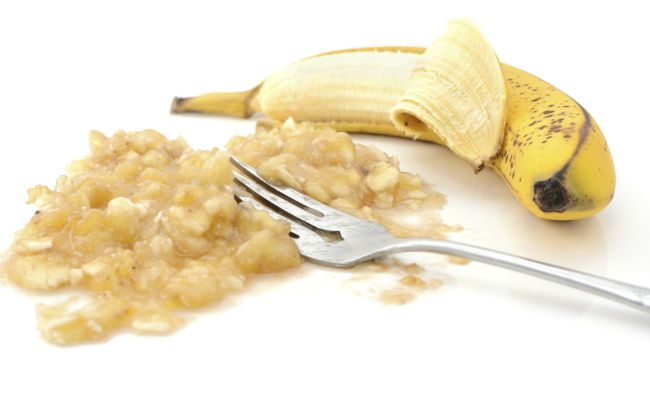
Banana and egg hair mask
- 2 ripe-overripe bananas
- 1 egg
Eggs are a source of protein and provide strength to the hair.
Coconut oil and egg mask
- 2 tablespoons melted coconut oil (your hair length and thickness is the final determinant on quantity”>
- 1 egg
Coconut oil is one of the most popular oils among naturals due to its ability to penetrate the hair shaft and strengthen hair from within. This lightweight oil also smells like a tropical paradise and has the ability to impart shine.
Have you tried any of these DIY hair mask recipes or have you mastered one of your own? Sound off below.
Spring is the time of year when it’s customary to get rid of things we don’t need and get a fresh start. Why not also assess your hair regimen, products, and hair goals in general? While you’re getting rid of some excess baggage during your spring clean-a-thon, ditch any products with these ingredients for healthier, happier hair in 2016.
Bad alcohols
Not long ago, alcohols were universally believed to be bad for hair of all types. The widespread use of mousses, hair gels and hair sprays resulted in hair that was stiff, brittle, dry and in need of hydration. A problem attributed to the use of alcohols in these products. Now we have since come to know that not all alcohols are bad and that many of them are the very ingredients that help to moisturize and soften our hair. The tighter your curls, the more detrimental these bad alcohols are to your hair.
Be on the lookout for and avoid products containing the following alcohols: ethanol alcohol, SD alcohol, ethyl alcohol, isopropyl alcohol, benzyl alcohol, propanol alcohol, alcohol denat and isopropanol alcohol. If your hair is particularly frizzy, any of the above alcohols could be the culprit.
Sulfates
Sulfates are effective cleaning agents found in everything, from body washes to industrial degreasers. Though effective at cleansing they are far too strong for cleansing the hair and excessive use of sulfates can cause dry, itchy scalp, brittle hair and breakage. Sulfates also strip color from color treated hair and will cause rapid color fade and dull looking hair. Common sulfates used in shampoo formulations include; ammonia laureth sulfate, sodium laureth sulfate and sodium lauryl sulfate.
Cetyl dimethicone
Cetyl dimethicone is a silicone. Silicones are included in hair product formulations to seal the hair. They insulate the hair and create a barrier around the hair strands. This makes silicones great at smoothing the hair shaft, preventing frizz and creating slip for easy detangling. Silicones are also excellent heat protectants.
Despite the many benefits there is a drawback to using silicones. While some are water soluble, many are not. Cetyl dimethicone is one of those silicones that are not water soluble. This makes it necessary to use shampoos that contain sulfates in order to remove it from the hair and prevent product buildup on hair and scalp.
Stearyl dimethicone
Stearyl dimethicone is also another non water soluble silicone which requires the use of sulfate or clarifying shampoos for effective removal. If not properly removed, stearyl dimethicone can cause your roots to look and feel greasy. Product build-up on hair and scalp can cause itching and dryness of the scalp and can create a barrier between your hair and the products you apply so that your products are not absorbed by the hair and allowed to be effective; this makes hairstyling difficult.
Cetearyl methicone
Cetearyl methicone like other water insoluble silicones creates the illusion of sleek, smooth, frizz free strands with lots of shine and a feeling of softness. It also creates build-up if not thoroughly removed and since many curlies endeavor to avoid sulfates for reasons above, use of cetearyl methicone and other silicones like it should be avoided.
What ingredients are you planning to get rid of this spring?
My thick coarse hair means hours of doing any protective style. But on the flip side, I can go many weeks–at least three or four–before my hair ever gets to the point when I need to wash it.
I am a coarse haired natural and I love it. Do I ever get frustrated? Heck yeah.
But after five years, I’ve figured out how to take the good with the bad. Here’s my story.
I went natural after a short transition a little over five years ago; I had recently given birth to my daughter and I began to realize that loving myself as I naturally am is the best way to ensure she does the same. So I went natural. I did all the research and the YouTube bingeing you could imagine and it did help. Still, being natural has taught me many lessons. One of those lessons is that there’s nothing that prepares you for your texture like dealing with it. There’s no substitute for the experience of caring for your own unique hair.
I am a type 4 natural with a mix of unyielding coils, curls and kinks. But that’s not the important part.
At least not in my eyes. What matters is that my hair is coarse, thick, and full. Unless using a stretching technique, it’s nearly impossible for me to get it into a relatively smooth ponytail because I can’t get it all to fit in my hands. But I love that–I think it’s a good problem to have. My thick coarse hair means hours of doing any protective style. But on the flip side, I can go many weeks–at least three or four–before my hair ever gets to the point when I need to wash it.
I learned to love my hair by thinking about all the positives.
I have a full head of thick hair. My hair never seems to get weighed down by any product–I love that I can pretty much use a bucket load of castor oil, my number one favorite hair product of all time–and my hair drinks it up instead of becoming limp and greasy.
Coarse hair like mine is the driest of all hair types. The natural sebum produced by the scalp takes a longer time to travel the length of the hair and this is the reason we can extend the length of time between washes. The longer your hair is, the longer you can extend this time as well.
Not shampooing my hair does not mean I neglect my scalp.
I keep my scalp clean by focusing products on the length of my hair especially the ends when I moisturize. I also make my own DIY moisture mist with lots of great essential oils for keeping scalp feeling, smelling and looking clean. My favorite essential oils to use are rosemary, lavender, tea tree and peppermint. I add a few drops of each to water (with or without a bit of leave in conditioner”> and I’m good to go.
If you have coarse hair like mine, thick and creamy water based products are the way to go.
You want to use products loaded with moisturizing alcohols, humectants and emollients to help hair become and remain moisturized. I like to use products that include ingredients such as honey, castor oil, aloe vera, cetyl alcohol, and glycerin.
I keep my hairstyling regimen simple and low maintenance.
I love mini twists and crochet braids as protective styles and my go to everyday (quick”>style is two large flat twists going down to the back of my head. Sometimes, I part my hair in the middle and at other times I do a left side part. I can usually get three days or more from this style.
My regimen is a no fuss one. I keep my ends protected, handle my hair as little as possible and would be quite miserable if I had to go without my must have products for coarse hair, which are: Castor Oil, SheaMoisture Curl Enhancing Smoothie, and Oyin Handmade Hair Dew.
[prodmod]Do you embrace your coarse natural hair?
Marshmallow root
Many of us let our hair hibernate in protective styles during the cold months and only begin wearing our hair out again with the arrival of spring. Long term protective styling can result in knots and tangles caused by shed hairs that get caught in the style with nowhere to go. Depending on your texture, wearing out styles often may also result in tangles as well. In fact, just having naturally curly hair means knots and tangles are a part of your daily reality. The solution to easy detangling is marshmallow root extract. Marshmallow root extract creates a mucous-y, gelatinous substance when mixed with water. Marshmallow root extract imparts amazing slip which makes detangling a walk in the park. Look for marshmallow root extract in the next bottle of leave in conditioner or detangler you buy.
Bamboo extract
On a hair growth regimen? Bamboo extract could be the final piece to your growth puzzle. Bamboo is the fastest growing plant in the world with certain species growing up to 35 inches per day. Containing greater than 70% silica, bamboo extract is the richest source of natural silica. The benefits of this extract includes but is not limited to, less shedding, faster growth, stronger hair and greater natural shine. Let bamboo extract rejuvenate your hair this spring.
Try Nubian Heritage EVOO & Moringa Repair & Extend Pre-Poo Treatment
Ginseng root
If hair loss is on the brain this Spring, then ginseng root is just what the doctor ordered. Add volume to fine or thinning hair with this extract. Ginseng has been a component of traditional Chinese medicine for many centuries. Ginseng root extract will revitalize your skin by getting rid of those pesky under eye circles, provide you with anti- aging benefits, firm skin and tone your complexion. I can’t think of a better way to welcome spring than with glowing, healthy, youthful looking skin.
Try Aubrey Organics Biotin Repair Scalp Tonic
Sacred Lotus Flower
Scalp irritation is, for lack of a better word, irritating; the constant urge to scratch only makes it worse. Sacred lotus flower extract will not only soothe your scalp, but help increase hair’s volume and elasticity. The sacred lotus flower is a natural hair and skin moisturizer, perfect for rejuvenating skin that has been dry and flaky from winter.
Try Innersense Quiet Calm Curl Control
Chamomile
Chamomile is one of the most well-known extracts around. Beloved for its soothing properties, this extract can also be effective when lightening hair naturally. It is also used as a natural leave-in because of its follicle conditioning properties. Chamomile also nourishes and strengthens the hair.
Try Jason Organics Natural Apricot Conditioner
Rhatany Root
Also known as Krameria Triandra, rhatany root extract possesses astringent and toning properties and eases redness and inflammation. The conditioning properties of this root make it excellent for dry, dull and damaged hair.
Try Cibu Mousse Lee Foaming Volumizer
Sunflower
Sunflower oil has many healing applications. It’s high linoleic acid makes it an excellent anti-inflammatory and acne reducing agent. The oil contains vitamins D, A and E and is a good source of protein for the hair and skin, as well as antioxidant and anti-aging properties.
Try tgin Triple Moisture Replenishing Conditioner
Balm mint
Also known as lemon balm, balm mint is soothing to the nerves and scalp. Drinking a cup of lemon balm tea helps to relieve stress and soothes the nerves. This extract has anti-fungal, anti-bacterial and anti-oxidative properties which makes it great for fighting dandruff and similar conditions.
Try Aussie 3-Minute Miracle Reconstructor for Damaged Hair
Quinoa
Quinoa extract is filled with highly nourishing nutrients and functions as natural sealant. This extract also moisturizes the hair and scalp, making it helpful in retaining hair growth. Quinoa will improve your hair’s elasticity, making it a powerful tool in preventing breakage. The skin care benefits of quinoa include reduction in dark spots and a reduction in acne and the appearance of acne scars. Quinoa also fights the signs of aging and imparts a healthy glow to skin.
Try Aunt Jackie’s Curls & Coils Girls Soft & Sassy Super Duper Softening Conditioner or Quinoaplex by ONC.
Grape seed extract
Grapeseed oil is a lightweight oil that coats the strands of hair without weighing it down. This makes grape seed oil particularly great for those with fine hair. On skin the oil creates a non-greasy feel. Its high vitamin E content provides natural protection from the sun for both skin and hair. Grape seed oil works well to combat dandruff, eczema, psoriasis.
Revive, rejuvenate and refresh your hair, skin and health this spring by incorporating these fruit extracts in your daily life. Try a bit of DIY or seek out products that contain these potent extracts. A world of goodness awaits you.
While a bit of frizz is inevitable (and sometimes preferred”>, curl definition is an essential part of the curly life. Often times, it may be a challenge to get your curls to look and feel just right. It takes the right combination of products and technique to achieve defined curls with moisture without the crunch. Here are three techniques to help you maintain your natural curl definition.
Nathi’s Routine
-
Cleanse hair with a mild sulfate-free cleanser like DevaCurl No Poo.
-
Apply conditioner and distribute by raking product through your hair. Finger detangle.
-
Wet hair and apply more conditioner. If you are not comfortable leaving your rinse-out conditioner in, rinse completely and follow-up with your moisturizing styling cream.
-
Hold your head underneath the shower for a second or two. Lower your head so that your hair flips forward and apply your curl definer like DevaCurl Ultra Defining Gel.
-
Smooth products onto hair with your palms. Do not rake or shingle.
-
Scrunch hair all the way up to the roots and squeeze excess water from hair while scrunching. A pair of Deva Gloves is just the tool for this process.
-
Air dry.
-
Fluff the roots with fingers and whip your hair back and forth like Willow Smith to loosen curls and add volume.
If you’re looking for more affordable options, however, SheaMoisture Coconut & Hibiscus Co-Wash Conditioning Cleanser, Coconut & Hibiscus Curl & Shine Conditioner, and Coconut & Hibiscus Curling Gel Souffle would work quite well, too.
Lauren Lewis’s Routine
-
Cleanse and condition hair as normal.
-
Apply a leave in conditioner and rake through hair to coat all your strands. Finger detangle as you go to ensure all knots and tangles are removed. Scrunch each section as you apply a leave-in.
-
Apply a styling cream using the same rake and scrunch method you did when applying your leave in conditioner. TreLuxe Curl Supreme Styling Creme is a great choice in this routine, as it provides both definition and moisture.
-
Flip hair to one side and scrunch with a cotton t-shirt. Flip hair to the other side and repeat.
-
Use a flexible hold hairspray.
-
Diffuse hair to 30% dry on cool setting.
-
Air dry completely.
-
Apply oil for shine and to seal hair. Darshana Natural Indian Hair Oil works great.
-
Use an afro pic for added volume.
Donata White’s Plopping Routine
- Wash and condition hair as usual.
- Apply your leave-in conditioner or moisturizer while hair is still damp and seal. Use products that will help prevent frizz. Comb through. Using the Aussie Sydney Smooth Tizz No Frizz Gel over your moisturizer is a great way to tame frizz.
- Spread a large cotton t-shirt on a flat surface.
- Hang your head forward so that your hair falls in front of your face and lands in the center of the shirt.
- Slowly lower your head so that all your hair falls in layers onto the shirt. Think of pouring cake batter.
- Grab the ends of the t-shirt and bring them across your forehead and around to nape of your neck. Hold in place.
- Grab the top of the shirt and tuck the neckline down to base of your neck. This should cause the sleeves to move to the side of your head.
- Bring the sleeves around to the front of your forehead and tie. Tuck in any loose bits of t-shirt so that everything is secure.
- The next morning, undo the t-shirt in the morning and voila!
Try all three methods and see which one provides you with the results you like best. Happy experimenting!
You hear about Omega-3 fatty acids all the time, but what are they?
Omega-3 fatty acids are unsaturated fatty acids that are necessary for the body to function. According to the medical professionals of Physicians Committee for Responsible Medicine, they are one of two groups of essential fatty acids, the other one being omega-6. They are called ‘essential’ because they are key in a properly functioning body, although our bodies are unable to actually manufacture them. Since the body is unable to synthesize omega-3s we have to obtain these essential nutrients through our diet or by taking supplements.
What Omega-3s can do for your body
At the cellular level, omega-3 fatty acids help to make up the cell membrane, which is the gatekeeper of the cell. Its function is to regulate what enters and exits the cell. A proper functioning membrane will allow necessary nutrients into the cell, allowing waste to pass out of it and protect the cell from attack by keeping foreign bodies out. European Food Information Council says omega-3s are the basic components from which other substances that controls the body’s inflammatory response and blood pressure are made. Not only do omega-3s reduce inflammation, they also help to reduce the risk of chronic conditions such as cancer, heart disease, and arthritis.How to incorporate Omega-3s into your diet
Sources of omega-3 fatty acids include fatty fish such as sardines, salmon, herring and herring among others. It is recommended that these sources be included in your diet at least twice each week, according to researchers at the University of Maryland Medical Center. Fish isn’t the only source of omega-3s however.
These plant and nut extracted oils are also good sources of omega-3 fatty acids, too
Flaxseeds, walnut, walnut oil, canola oil, soybean oil, pumpkin seeds are examples of these. Below is a summary of some of the benefits of omega-3s.
How they benefit the hair
When it comes to healthy, shiny hair, you get out what you put in. This means that proper nutrition is key for healthy hair, and fatty acids help to promote hair growth, as well as add sheen and luster to hair. Proper amount of omega-3 in your diet prevents dry, itchy, flaky scalp and is beneficial in reversing hair loss.
How they benefit the skin
A balanced diet is essential for glowing skin. As they reduce inflammation, omega-3 fatty acids can improve the appearance and feel of skin. Omega-3s also function as moisturizers from within ensuring healthy skin that is clear, supple and free of wrinkles. Omega-3s may also help to improve skin conditions such as psoriasis and reduce UV ray sensitivity. However, this is no excuse to skimp on using sunscreen!
The heart
According to the National Institute of Health, a diet rich in unsaturated fats–such as omega-3s–is the best way of preventing heart disease. High blood pressure and high cholesterol are two of the risk factors for heart disease and the risk of these conditions are also lowered by diets rich in omega-3 fatty acids. The risk of getting a stroke also decreases when people eat at least two servings of fish on a weekly basis.
The brain
Research suggests that omega-3 may protect new moms against postpartum depression and depression sufferers who took omega-3 fatty acids in addition to their anti-depressants had better symptom improvement than those on antidepressants alone.
Sufferers of dementia, bipolar disorder, and schizophrenia may see improvements in their symptoms–less frequent mood swings, for example”>–when omega-3 supplements are taken. Studies on the subject, however, have yielded conflicting results. Omega 3-s are believed to protect against Alzheimer disease and dementia as research has shown that reduced intake of omega-3s is linked to an increase in risk of age-related cognitive decline/dementia which includes Alzheimer disease.The eyes
Macular degeneration is an age related condition of the eye that can lead to blindness. People who eat more fish and have diets rich in omega-3s are less likely to develop this condition.
Personal growth and development
We know that omega-3s are essential for proper growth and development. Studies have shown that during pregnancy omega-3s are important for proper brain development of the fetus and one study has found that children with low omega-3 levels had difficulty reading.
Higher IQs in children have been linked to higher levels of maternal omega-3 consumption during pregnancy. ADHD in kids may also be improved by increasing omega-3 intake.
Cancer prevention
The risk of colon cancer, breast cancer and prostate cancer is believed to be less in people (Eskimos, women and men in that order”> who have diets rich in omega-3 essential fatty acids.
Menstrual cramps
One study linked the intake of omega-3 fatty acids supplements with a reduction in menstrual pain.
With such a long list of benefit in every area of health and well-being, the fact that many of us do not meet the recommended intake of omega-3s is quite unfortunate, says the Meg-3 site. Just look at all the benefits that we’ve been missing out on. Luckily, we can take action now by making small adjustments our diets. Should you decide that supplements are the way to go then be sure to discuss this with your doctor. Time to glow!
Photos courtesy of Beyhan Yazar at Getty Images and @sgrx on Instagram






